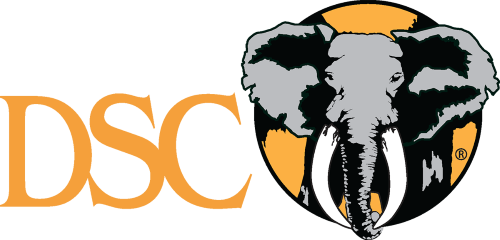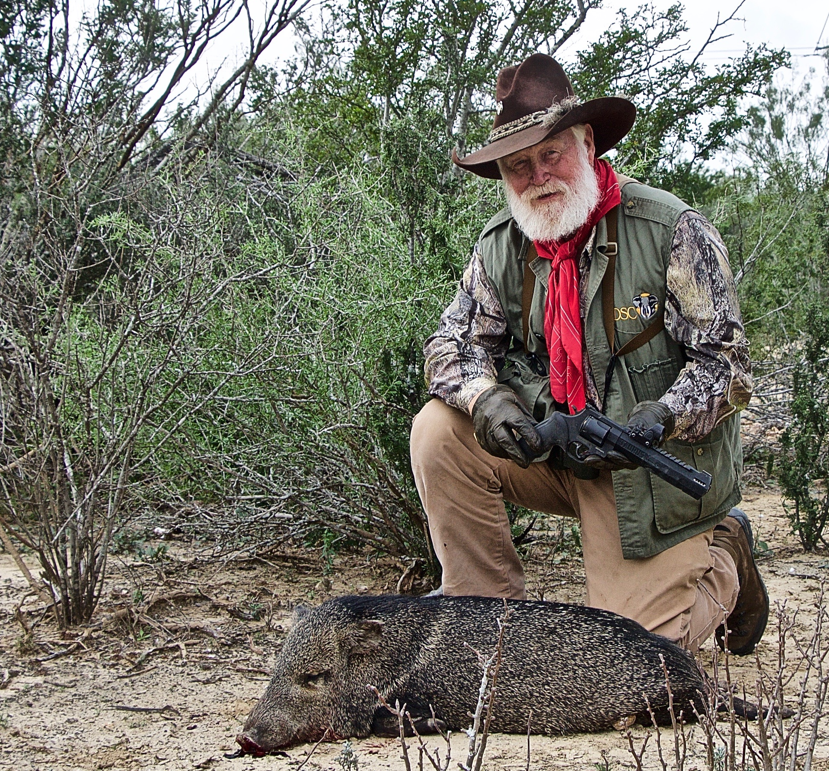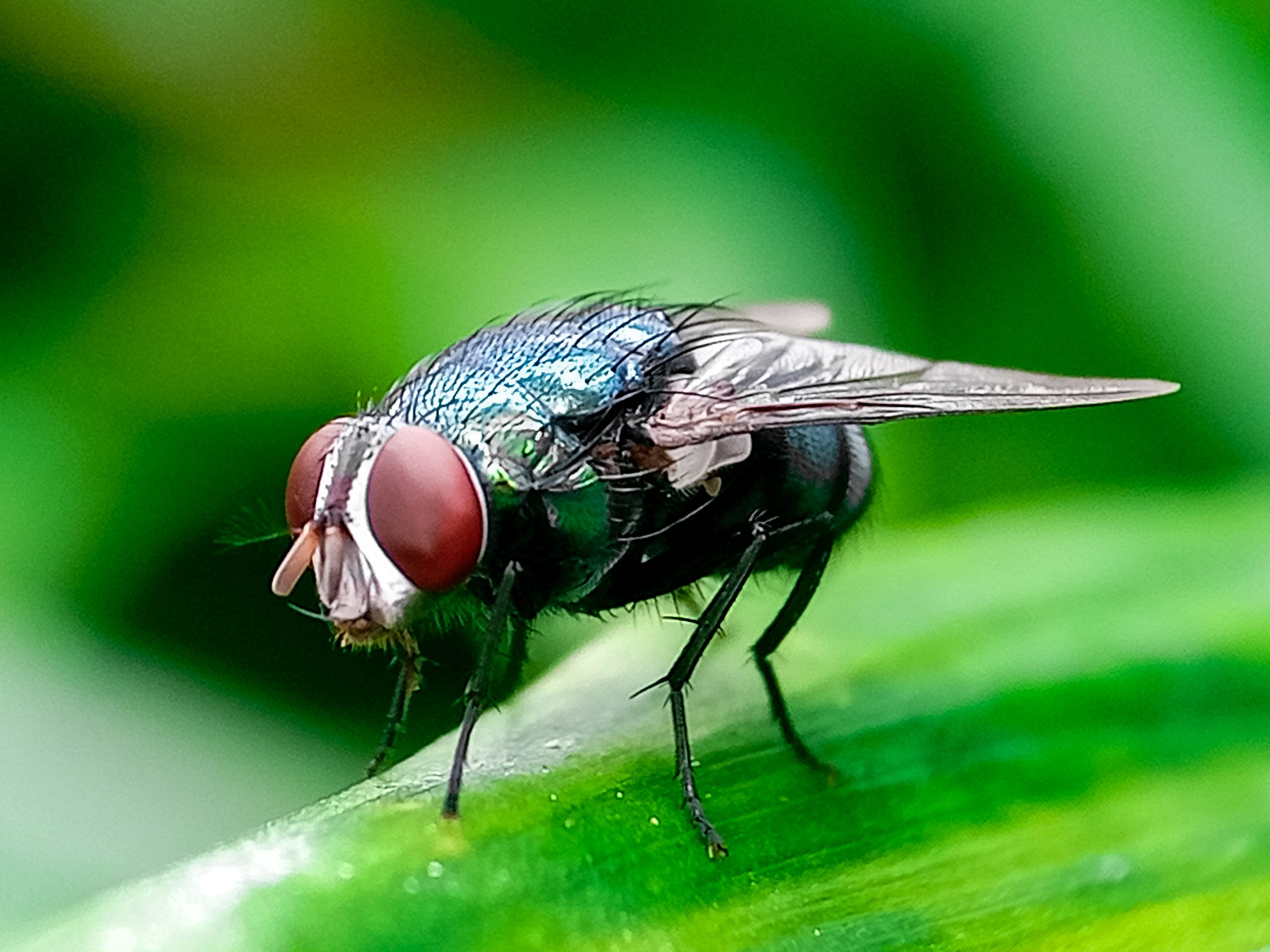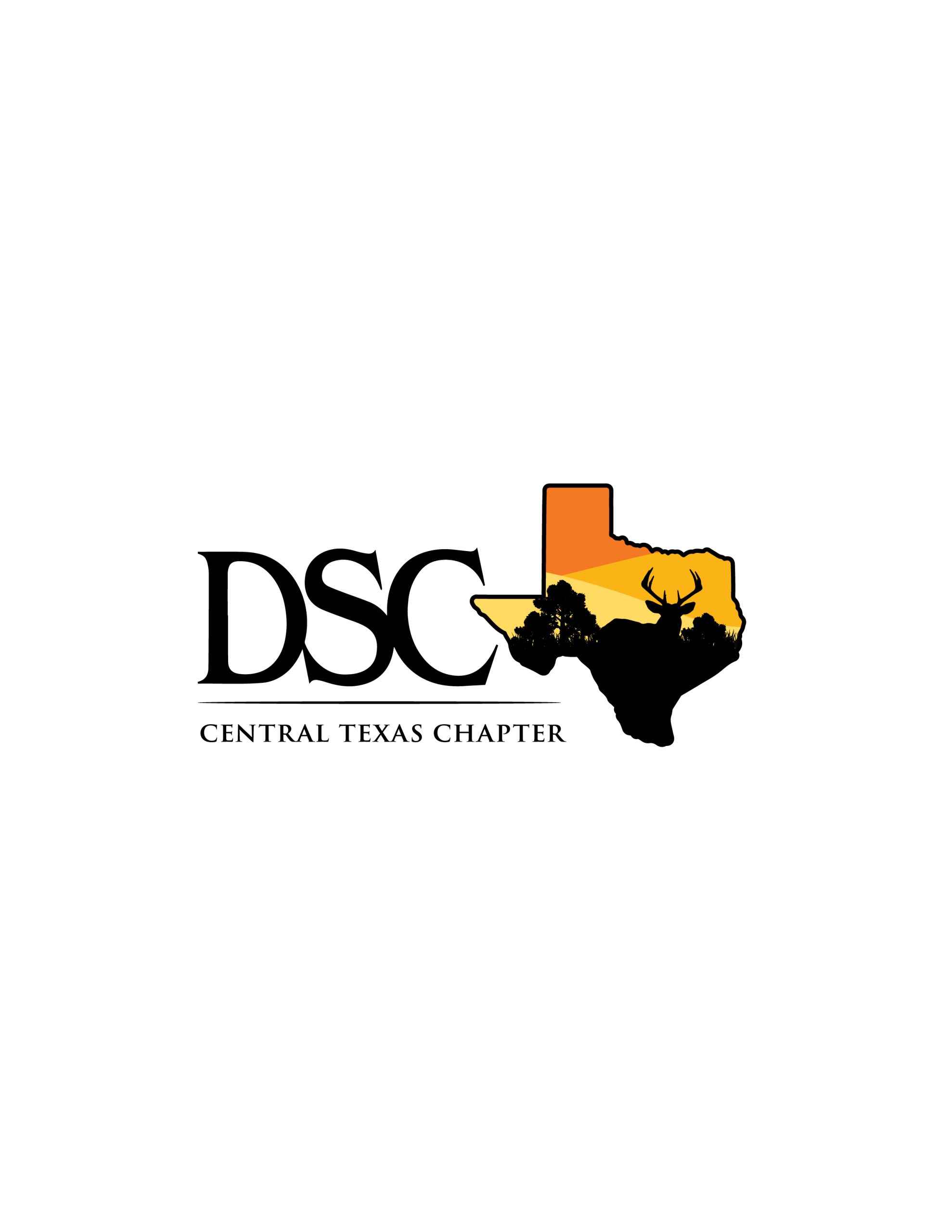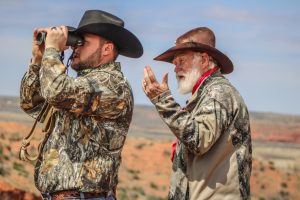 “Stowe your gear and change into whatever clothing you want to hunt in. Brandon and Chris are down at the rifle range making certain his 7mm PRC Mossberg rifle is properly sighted in. Soon as they get back, we’ll head to the canyons.” Said Craig Archer when I arrived at his Double A Outfitting camp.
“Stowe your gear and change into whatever clothing you want to hunt in. Brandon and Chris are down at the rifle range making certain his 7mm PRC Mossberg rifle is properly sighted in. Soon as they get back, we’ll head to the canyons.” Said Craig Archer when I arrived at his Double A Outfitting camp.
“Perfect, I’ll carry my .454 Casull handgun this afternoon. Then sometime tomorrow, likely midday, I’ll mount a scope on my Mossberg 7mm PRC and .30-06 as well. Picked them up on my way to the ranch.” I replied. “Be back out in five minutes or less.”
I quickly changed into my Habit hunting shirt, grabbed my binocular, some extra shells, my Taurus Raging Hunter and cameras. As I stepped back out onto the porch, Brandon Houston and Chris Daniels pulled up. Brandon pointed at a target in his hand.
“Two shots, literally touching at 100 yards! Looks like the 7mm PRC really likes 175-grain Hornady Precision Hunter ammo! Now all we need is one of the big aoudad rams you saw a couple of days ago,” said Brandon looking at Craig. “You said they were mature. Think their horns were over 30 inches long?”
Craig smiled, “If we can find them, and, you shoot as accurately as your target shows, even if you shoot the smallest of the three, I think it will be at least a 32-inch ram. The biggest will likely measure over 34 inches or more. Not only do they have long horns, they’re extremely massive. We’ll do our best to find them. But as you know aoudad are aoudad; sometimes they’ll hang in an area for a while and then simply disappear.”
He continued, “The weather is going to change. We usually get high winds in late March, but they’re predicting a westerly front blowing through that’s going to produce sustained winds in excess of 40 miles per hour. It’s gonna get windy!”
Less than an hour later we were in the Double Mountain Fork of the Brazos River bottoms, looking up at red-walled canyons draining into it.
“Two days ago I saw the rams standing on the edge looking down, just like when I saw them a week ago. Apparently at least for the time being they like it there.” Craig added. “For some reason, those three rams are hanging together. The vast majority of the aoudad I see are on the other side of the river, but even there I’ve seen some impressive rams.”
“Remember that single ram we saw hunting mule deer, as I recall almost straight across the bottoms? That ram had extremely long horns! The longest-horned ram I’ve taken is 33 inches. That ram had to be at least two, if not three inches longer,” I said, thinking back that I probably should have tried to stalk him. Craig nodded. But he had been in an area where he could see our every move.
Aoudad have extremely good eyesight. Usually they travel in herds. The big ram had been an exception, but quite possibly there were several more with him just beyond what we could see.
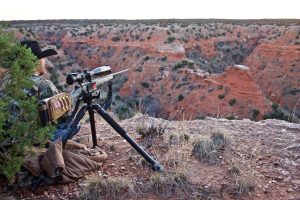
After spending time carefully glassing the deep, steep-sided canyons and the juniper and mesquite covered tops finding only a couple of mule deer does, we decided to head across the river to the opposite canyons.
The purpose of our hunt was several fold, including filming at least one episode for our “The Journey” digital television show which appears on www.carbontv.com and numerous other networks; recording an episode with Craig and Brandon for my weekly “DSC’s Campfires with Larry Weishuhn” available just about everywhere podcasts can be listened to including on carbontv.com, and now too in video on my “dsccampfireswithlarryweishuhn” YouTube channel, as well soon on FacebookTV and numerous other places, same as our “The Journey” tv show. I also hoped to gather material for blogs and articles; and hopefully watch Brandon take his first animal with a 7mm PRC. We also wanted to visit with Craig about future hunts with his Double A Outfitting.
Craig and I go back a way and have hunted together numerous times for whitetails and mule deer. Hunting with him I had taken my two best antlered Texas desert mule deer, as well as some impressively racked whitetails, and huge wild boars as well. I knew if Craig said the three aoudad rams he had seen were big, they indeed were as big and likely had horns even bigger than he had said.
We found more mule deer across the river, as well as whitetails, plus sightings of distant wild hogs and Rio Grande turkey. But the only thing aoudad we found were tracks and droppings. As the sun dipped below the horizon we headed back to camp for one of Double A Outfitting’s legendary camp meals!
Next morning, driving just below the bluffs, Brandon spotted an aoudad ram just as it disappeared over the edge heading back into the canyons. “He looked dark, more reddish than a young aoudad ram, and his horns looked long,” said he.
We quickly moved away from just below the bluffs in hopes of spotting him again. But by the time we got where we could see more of the canyons and tops, the aoudad had disappeared.
“We’ve got two choices,” started Craig. “We can try to go after him, but the only approach we can do will be with the wind at our back and the sun in our faces. No other way we can get on top.” He hesitated then added, “Or, we can go hunt another part of the canyons, then return tomorrow morning early. The wind is supposed to change directions tonight, although it will be quite substantial. Then too, if the sun shines it will be at our back.”
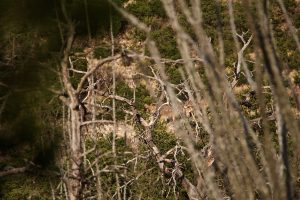
I looked over at Brandon, then nodded in agreement when he opted to return the next morning. We spent the day walking the ridge tops of many canyons, deep cuts that are extremely rugged and often steep-sided in hopes of finding the herds of aoudad that make them their home. After hours of glassing, we spent the last of the day sitting watching a series of canyons. We saw several mule deer, including bucks that still had their antlers, as well as numerous whitetails, but no aoudad.
Back at camp that night we recorded an episode of my “DSC’s Campfires with Larry Weishuhn” podcast talking about aoudad hunting, but also about where Craig was headed with his Double A Outfitting. Very shortly after another fabulous meal, all in camp drifted to their respective bedroom.
The next morning at first light we were crawling and clawing our way up the steep canyon walls. Once on top we started glassing where we could see several canyons and into the deep steep-sided cuts. We soon spotted a herd of five mule deer bucks, then another ten does and nearly grown fawns. But all we saw of aoudad were tracks, their circular beds complete with impressions of where they had laid their heads and horns, as well as shed hair from their long chaps and mane. We glassed and walked canyons until mid-afternoon, then headed back to camp to get ready for another afternoon vigil. By then the wind had increased to 35 miles per hour with gusts well beyond.
I took advantage of our camp time and mounted a 2.5-12.5×42 Trjicon AccuPoint scope on my new .30-06 Mossberg Patriot rifle and a 4-16×50 AccuPoint on my 7mm PRC Mossberg Patriot Predator. Even though the wind was blowing “excessively” I headed to the ranch range and quickly bore-sighted both rifles. My first shots with Hornady ammo were really close to the bullseye at 25 yards. I made some quick minor adjustments to the turrets, then moved the target to 100 yards. One more shot with each got me within an inch or so of the bullseye. I followed those shots with two more, in each instance both rifles printed shots that touched exactly where I wanted them to hit at 100-yards. My 7mm PRC really liked Hornady’s Precision Hunter 175-grain ELD-X and my .30-06 loved Hornady’s 178-grain ELD-X Precision Hunter. I headed back to camp.
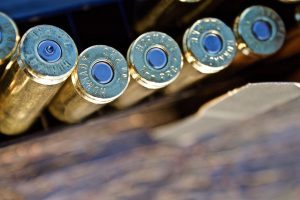
The wind was indeed blowing hard, gusts in excess of 40 mph. I suspected aoudad would be hiding in deep canyons, out of the wind. I knew those canyons held a variety of vegetation including bush ephedra, excellent deer and aoudad browse. There really was no reason to leave their sanctuaries. Where their kind originated, the mountainous northern part of Africa’s Sahara Desert along the Barbary Coast, thus why sometimes they are called Barbary sheep, aoudad never drink free-standing water. They get what moisture they need from the vegetation they eat. They do not need to go to free-standing water. In other words, if the aoudad did not want to move, they did not have to!
We continued hunting aoudad, spending considerable time glassing and walking remote canyons which I doubt had seen humans since the days when Quanah Parker and his Comanche band wintered occasionally in the area, or when a cowboy of another era scoured the “Redlands” for wild cattle. Doing so we saw mule deer and whitetails, a few wild hogs and strutting wild turkeys, but aoudad kept avoiding us.
All too soon it was time to leave. Had our hunt been “unsuccessful?” Gracious No! Far from it!
We got to spend time with good friends, but also explore areas both Brandon and I hoped to return to come the fall when we will again be hunting mule deer on the ranch. Both of us saw bucks we can hardly wait to see what their antlers will look like this coming fall. We did leave with something … the resolve to return to the red canyons to again pursue wily aoudad, interlopers which have made this beautiful and intriguing land filled with history their home.
